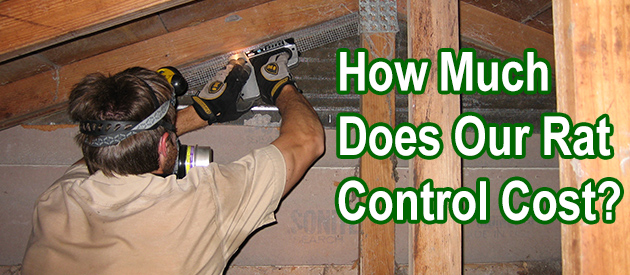Contra Costa County, Richmond Rat Control Situation:
Hello!!! I was just at your website, and thought I would throw an email your way... I went into my garage tonight, and was throwing a load of laundry into the washer, and I heard scratching coming from the wall in the far right hand corner of the garage... I went over to inspect, and couldn't see anything, but the scratching continued... I tapped on the wall with a broom, and the scratching stopped... My question to you is this- if it were to be a mouse would I be able to hear them so clearly scratching? I know they don't weigh a whole lot... We did have a problem with squirrels in the attic a couple of months ago, but we got rid of them, and blocked the entry way that they made to enter the attic... We checked outside this evening after we heard the scratching, and cannot find any entry points in the eaves, soffits, etc... So I am under the impression that its not squirrels or something large like that (praying that its not)... I hope I have made sense... I am a nervous wreck right now at just the thought that their is something in my wall =( I hope to hear back from you soon... Joni
My response: Sometimes mice can make very loud noises, if they scratch directly on the drywall. But squirrels, opossums, raccoons, and rats also get in wall frequently.
Richmond Rat Control Tip of The Week
Why Don't High Pitch Sound Deterrent Machines And Strobing Lights Work Against Rats?
The first thing you need to understand about high pitch sound deterrent machines and strobing lights is that these machines have been officially announced as being fraudulent by the Federal Trade Commission. This is enough proof that the efficiency of these repelling devices is self-proclaimed and that they don't have anything to offer when it comes to repelling rats from your home.
Have you been wondering why these devices don't work against rats? Right here, we will be sharing all you need to know about them and why you should consider other means of getting rid of the rats in your home.
High pitch sound deterrent machines or strobing lights that are designed to repel rats using mechanical means. The former uses high pitch sounds that don't affect humans and is not audible to the human hearing to irritate the eardrums of small animals like rats and make them stay away from the areas the sound is coming from. While the latter is designed using a short wavelength of light rays to scare rats away in the night whenever they try to move around.
These devices might seem like a perfect way to repel rats, but the fact is that neither of these devices work. Rats are smart animals and can easily figure out if something poses a serious threat to them or not. Once they figure out that it doesn't, they will continue with their activities and withstand the effects caused by these devices.
Having shared this, you must consider other ways of getting rid of these rats in other to avoid wasting your hard-earned money. Neither of these devices will give you the results that you desire.


